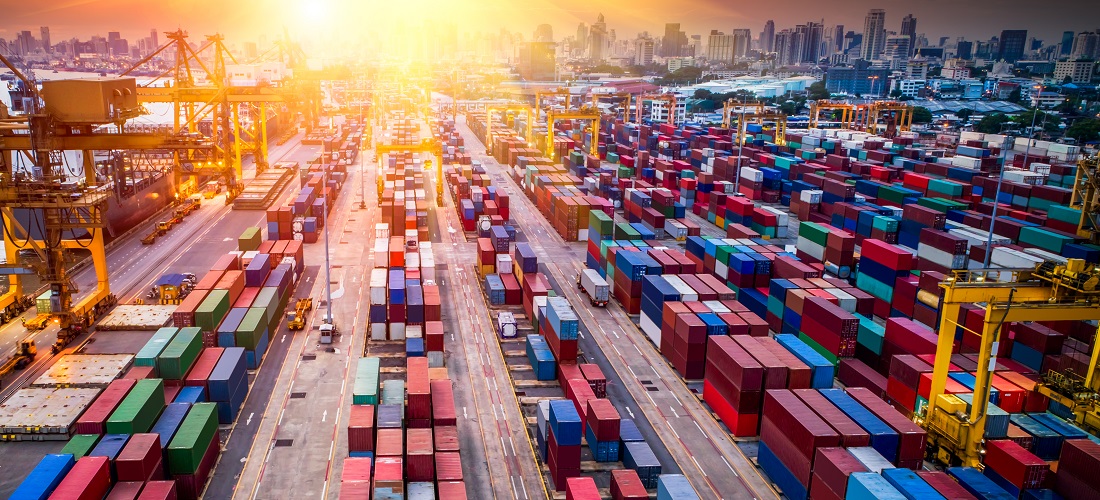
DataLiner: new data reveal large drop in Brazilian containerized exports in 4Q22
Jan, 31, 2023 Posted by Gabriel MalheirosWeek 202305
Data recently released by Datamar’s Business Intelligence team on the movement of containers in Brazil indicate that, in 2022, Brazilian containerized exports fell 4.6% compared to 2021. The drop is much more pronounced in the fourth quarter of the year. The country sent 10% fewer containers abroad in October, November, and December than in the same months in 2021.
In December, 222,954 TEUs were exported via Brazilian ports vis-a-vis 268,734 TEUs in the last month of 2021, which represents a 17% drop in shipments.
The following chart displays the track record of Brazil’s container exports. The data below was collected by Datamar’s Business Intelligence team:
Brazilian containerized exports | Jan-Dec 2019 to Jan-Dec 2022 | TEUs
Source: DataLiner (click here to request a demo)
The chart below shows the drop in export volumes in the last quarter of 2022 compared to previous years:
Brazilian containerized exports | Oct-Dec 2019 to Oct-Dec 2022 | TEUs
Source: DataLiner (click here to request a demo)
Several products went through decreases in shipments in 2022 compared to the previous year, such as wood (-18%), cotton (-8%), and coffee and tea (-7%), as can be seen in the table below:
Products with the most negative variation | 2021 – 2022 | TEUS
wdt_ID Commodity 2021 2022 %
1
WOOD
457.968
375.854
-18%
2
COTTON
156.595
143.355
-8%
3
COFFEE, TEA, ETC
126.652
117.656
-7%
4
PLASTICS
110.649
106.042
-4%
5
FRUITS AND NUTS
96.041
72.649
-24%
6
SUGAR
79.882
67.051
-16%
7
STONE, PLASTER, CEMENT, ETC
62.773
54.686
-13%
8
RUBBER
53.029
51.976
-2%
9
IRON AND STEEL
61.850
49.313
-20%
10
FOOD INDUSTRY RESIDUES;
50.229
45.908
-9%
11
CERAMIC PRODUCTS
56.108
44.719
-20%
12
ORGANIC CHEMICALS
37.640
35.347
-6%
13
FURNITURE, BEDDING, ETCVEGE
44.038
33.836
-23%
14
VEGETABLE PREPARATIONS
32.885
32.245
-2%
15
HIDES AND SKINS
24.531
21.842
-11%
| wdt_ID | Commodity | 2021 | 2022 | % |
|---|---|---|---|---|
| 1 | WOOD | 457.968 | 375.854 | -18% |
| 2 | COTTON | 156.595 | 143.355 | -8% |
| 3 | COFFEE, TEA, ETC | 126.652 | 117.656 | -7% |
| 4 | PLASTICS | 110.649 | 106.042 | -4% |
| 5 | FRUITS AND NUTS | 96.041 | 72.649 | -24% |
| 6 | SUGAR | 79.882 | 67.051 | -16% |
| 7 | STONE, PLASTER, CEMENT, ETC | 62.773 | 54.686 | -13% |
| 8 | RUBBER | 53.029 | 51.976 | -2% |
| 9 | IRON AND STEEL | 61.850 | 49.313 | -20% |
| 10 | FOOD INDUSTRY RESIDUES; | 50.229 | 45.908 | -9% |
| 11 | CERAMIC PRODUCTS | 56.108 | 44.719 | -20% |
| 12 | ORGANIC CHEMICALS | 37.640 | 35.347 | -6% |
| 13 | FURNITURE, BEDDING, ETCVEGE | 44.038 | 33.836 | -23% |
| 14 | VEGETABLE PREPARATIONS | 32.885 | 32.245 | -2% |
| 15 | HIDES AND SKINS | 24.531 | 21.842 | -11% |
Source: DataLiner (click here to request a demo)
Among the main destinations for Brazilian container exports, Russia experienced the most significant proportional drop in volumes in 2022 compared to the previous year (-57%), but the reduction in the container volume sent to the United States (-9%) is also noteworthy. In addition, other low-volume destinations, including Hong Kong (-44%) and Peru (-15%), saw significant drops.
Several factors caused the decrease in shipments. The conflict between Russia and Ukraine is one of the factors that led to a global recession with severe consequences for European, Argentine, and South American foreign trade.
Furthermore, high maritime freight rates until the middle of the year had an impact on container shipments. Some cargoes, which have long been shipped inside containers, such as coffee and sugar, are now transported in bags in breakbulk vessels. A lack of available containers also hampered fruit shipments; thus, reefer ships were used to export melons, for example. Some shipowners were also slow to pass on the drop in freight rates to their customers, and some cargo loads were transported via road whenever possible.
Imports
In 2022, imports dropped by 3% compared to 2021. However, comparing December 2022 to the same month in 2021, the drop was 4.5%.
Check below the track record of Brazilian imports via containers from 2019 onward. The data was gathered by Datamar’s Business Intelligence team:
Brazilian containerized imports | Jan-Dec 2019 to Jan-Dec 2022 | TEUs
Source: DataLiner (click here to request a demo)
Tendencies
The context will remain fragile in 2023. Although experts at the World Trade Organization (WTO) predict a 1.0% increase in global trade volume in goods this year, the growth is much smaller than expected.
Lower demand has resulted in lower freight rates. With fewer shipments from Latin America, freight rates in the region remained stable. According to the latest Platts Americas Container Freight report from S&P Global, released on January 30, container rates from the Far East-East Coast of South America fell by US$ 100, or 8.3%, to $1,100/FEU in the last week.
-
Ports and Terminals
May, 20, 2019
0
Vale halts cargo transportation between Sabará and Barão dos Cocais
-
Trade Regulations
Jun, 19, 2023
0
European demand for Brazilian goods surges amidst stringent environmental regulations
-
Ports and Terminals
Mar, 09, 2022
0
Paraná ports have settled aa new double handling record
-
Meat
Aug, 31, 2021
0
Argentina restricts beef exports for 2 more months


